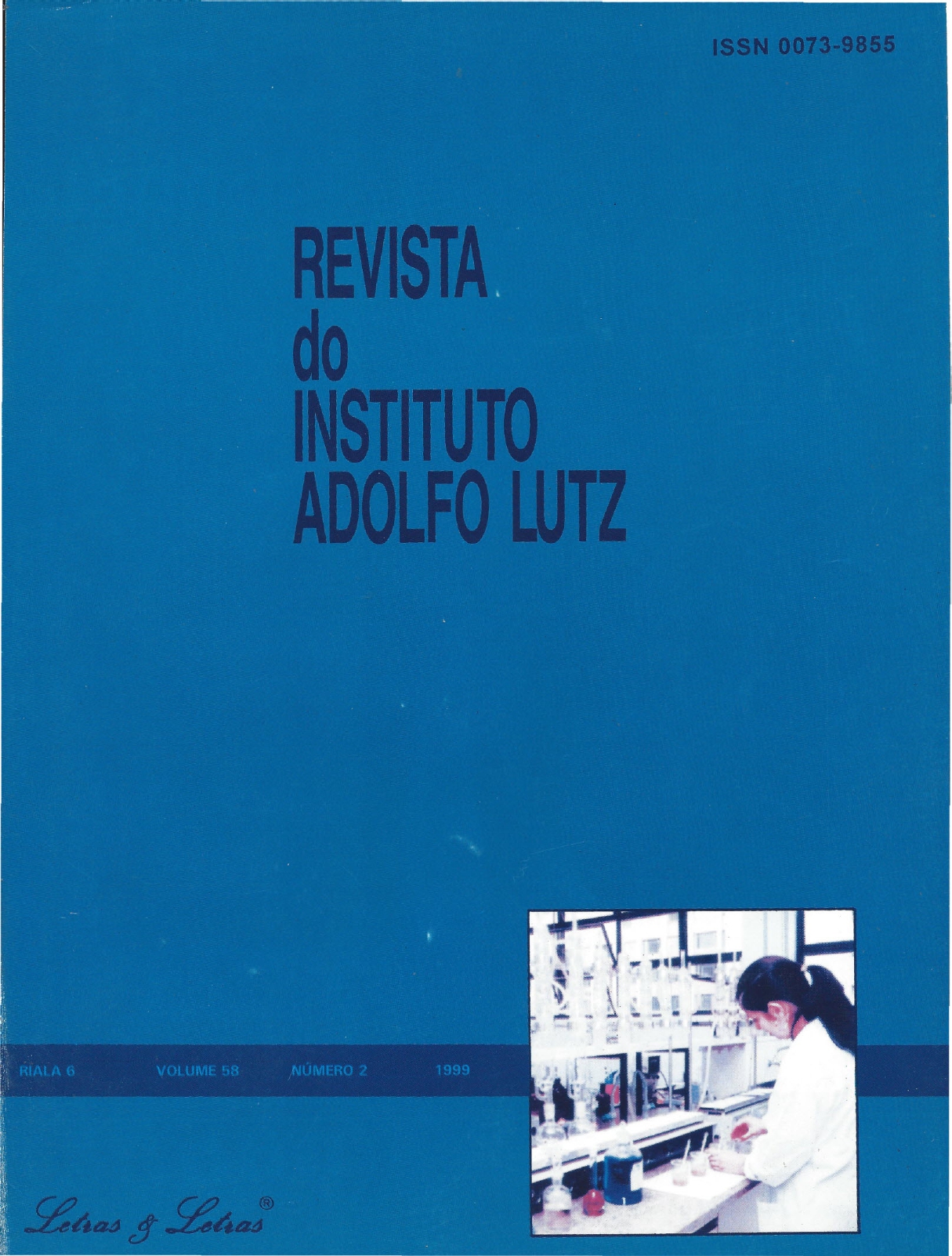Abstract
Oyster are frequently eaten raw and alive. Because of this, are often object of depuration process (physical an chemica1 decontamination), since its consumption habit has important epidemiological implications. It was perfomed essays to verify the possibility of live oyster contamination at laboratoria1level: oysters was maintened alive in sea water previously ozonized and then contamined with Vibrio cholerae EI Tor, 01, Ogawa, non toxigenic. Quantitative analytical determination was realized in sea water and oysters, immediately and 2,4,12,18 and 24h after the contamination. After 2h, oysters presented high numbers of V cholerae, namely positivity in 10.7 dilution, compatib1e with the initial sea water contamination. The leve1s of the strain used in this experiment was constantly high during the period of observation (positivity till 109 dilution in water and 108 in oysters). The results obtained indicate that this contamination may be useful for laboratorial observation of etficacy and efficiency of tecnhological depuration (decontamination) process of oysters, since allow measurements at real condictions. Number of viables cells obtained at ditferents periods of time shows that the strain was capable of adaptation, including multiplication, in this experiment. It was realized three independents experiments.
References
Don F. Splittstoesser, editores. p. 791.1992.
2. COOK, D.W. and RUPLE, AD. Indicator bacteria and Vibrionaceae multiplication in postharvest shellstock oysters. J. Food Protect. 52:343-349. 1986.
3. ELLIOT, E.L.; KAYSNER, e.A; TAMPLIN, M.L. Vibrio cholerae, V. parahaemolyticus, V. vulnificus and others Vibrio spp. In Bacteriological Analytical Manual, F.D.A 7th.Ed. 1992. Publicado e distribuído por AOAC International, Arlington, VA.
4. ICMSF - lnternational Commission on Microbiological Specifications for Foods. Microbial Ecology of Foods, vol. 1. Factors Affecting Life and Death of Microorganisms. Academic Press. London and N.York. 1980.
5. INSTITUTE OF MEDICINE. Committee on Evaluation of the Safety of Fishery Products. Sea Food Safety. Farid E. Ahmed, editor. National Academic Press. Washington, D.e. Capo 2,3,4 e 6. 1991.
6. JAY, J.M. Modern Food Microbiology. 4th. Ed. Chapman & HaIl. N.York and London. p.297-300 e 342. 1992.
7. KLONTZ, x.c., TAUXE, R.Y.; COOK, W.L.; RILLEY, W.H.; WACHMUTH,K. ChoIera after the consumption of raw oysters. Annals of International Medicine, v.107, p. 846, 1987.
8. OPS-OMS/IAEA-FAO-ONU. Informe final. Consulta técnica conjunta FAO/IAEA/OPS-OMS sobre el uso de irradiacion corno medida de intervencion de salud publica para el control de enfermidades transmitidas por alimentos en Latino America y El Caribe. HPV/FOS/126/92. 1992.
9. RICHARDS, G.P Microbial purification of shellfish: A review of depuration and relaying. 1. Food Protect. 51:218-251. 1988.
10. RUBlO, T.C. Uso de Ia irradiacion como medida de intervencion para controlar enfermidades transmitidas por alimentos en Latino America y El Caribe. 20. Informe del Contracto de Investigacion 778I/RB, IAEA (International Atomic Energy Agency)/Chile. Abril, 1997.
11. UNIVERSITY OF ADELAIDE, Australia. Algal Toxins in Seafood and Drinking Water. Ian R. Falconer, editor. Academic Press. 1993.
12. VARNAM, A.H. & EVANS, M.G. Foodborne Pathogens - an Illustrated Text. Wolfe Publishing. p.176-177. 1991.
13. WOOD, PC. The principIes and methods employed for the sanitary control of molluscan shellfish. Technical Conference on Marine Pollution and its Effect on Living Resources and Fishing. MP/70/R12. WHO/FAO. 1970.

This work is licensed under a Creative Commons Attribution 4.0 International License.
Copyright (c) 1999 Instituto Adolfo Lutz Journal
